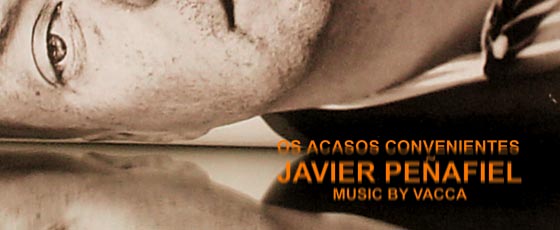
Javier Peñafiel Private view: Opening hours: Wed - Sat, 2 - 7 p.m. |
Di que no es verdad
There is a multitude of references informing the work of Javier Peñafiel. A work marked by two interrelated moments to be though differentiated: video and drawing.
I have been thinking of thousands of ways to explain what causes the apparent crypticism (irritating for some, unfairly personal for others) of the whole of his artistic practice. The first thing that comes up in my mind is a musical experiment between the American Eydie Gorme and the trio Los Panchos. The lyrics of one of their stylistic remakes between cha-cha-cha and bolero start with the velvety voice and an accent difficult to categorize of a woman who addresses us with ease:
Con el alma llena de amargura y sin saber qué hacer,
He venido aquí con esta duda a escuchar tu voz.
Di que no es verdad, lo que murmuran por ahí
Di que no es verdad, que es envidia o maldad
Bolero always addresses the audience’s personal experience, the frustration of knowing one’s love is not returned. And this is the reason why I have chosen this example to reflect upon the relation Javier Peñafiel’s work sets up with the exterior world. The many characters populating his work constitute a peculiar way of examining the whole spectrum of personal fears. No matter if in his videos or drawings, every single one of them is given rise to –as in Goya episodes - by the need of investigating the possibilities and limits of fantasy. The fantastic element must not be mistaken for a synonym of wonder, though. It is instead a new mental compartment reaching out to what is alien, strange or surprising, as an aim in itself.
In his videos, instead of using different alter egos willing to remain in the limbo of the powerful feeling of loneliness they seem possessed by, the artist puts himself in front of the camera. The camera allows him to open a window on the world, even though the world itself hardly appears in the image, perceived as it is as something alien, a threshold that we never saw him cross. The whole of his work is based on the policy of solipsism.
The seduction of fiction is a way of drawing attention to the conservative counter-illustration characterising the contemporary intellectual panorama, as well as leaving each one of us dealing with a severe feeling of being exposed to a gloomy relapse we do not really know how to get out of. The swiftness with which matters of major importance are solved reinforces the need felt by artists such as Peñafiel to create moments of undeniable ambiguity, which are expression of the necessity to appeal to the world of all those who feel themselves wasting away in oblivion and unable to establish bonds with any community whatsoever.
Chus Martínez
[curator Frankfurter Kunstverein]